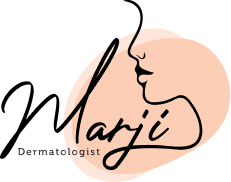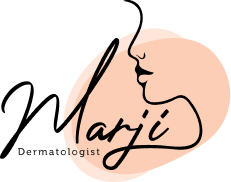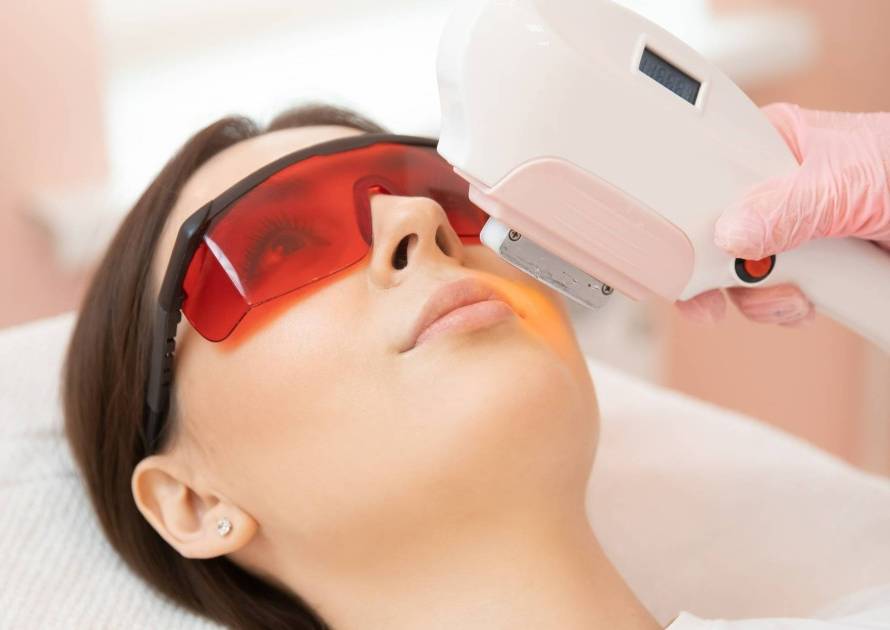If traditional hair removal methods like waxing, tweezing, and shaving is no longer convenient for you. If you’re looking for a better, less painful, and long-lasting solution, you might want to learn more about laser hair removal.
This article aims to focus on helping you better understand laser hair removal, its benefits, and types, and answer all the frequently asked questions that commonly cross your mind regarding laser hair removal.
Overview
Hair removal is no longer considered removal but rather hair reduction. That is because it reduces the number of hair follicles rather than destroying all of them. No matter what setting you try, hair cannot be entirely eradicated, but it can be reduced to almost nothing.
What Is Laser Hair Removal?
Laser hair removal is a medical procedure that utilizes a concentrated type of laser in one wavelength only to remove unwanted hair. The light that the machine produces works on one wavelength only, which makes all the waves parallel to each other.
These waves target one specific chromophore, which, in this case, is melanin (pigment cells) in the hair follicles. The energy of the light used turns to heat, which damages the sacs within the hair follicles. Therefore, it prevents or delays future hair growth.
As mentioned earlier, laser hair removal does not mean permanent hair removal. It works on destroying pigment cells within hair follicles so that no new hairs grow. However, it is possible for hair to grow back in fewer numbers. Follow-up treatments are usually scheduled after the main course of treatments ends. These follow-up treatments try to eliminate hair growth even more.
Laser hair removal is most effective for people who have fair skin and dark, thick hair. However, this does not mean that laser hair removal does not work on other skin and hair types and colors.
Factors that We Take into Consideration Before Laser Hair Removal
There are essential things to take into consideration when before starting the laser hair removal procedure. The most important factors are:
- Color of the hair: Laser hair removal works most efficiently on black, thick hair since it is easier to detect and target due to its increased pigmentation cells number.
- Color of the skin: Laser hair removal works best for people with fair skin and dark hair because the contrast between light skin and dark hair allows the melanin (pigment cells) to be easily targeted.
- Hair diameter: Fine hairs heat up quickly but cannot hold the heat, and so they require short pulse widths, usually in the range of 5-10ms. Meanwhile, thicker hairs heat more slowly and hence require much longer pulse widths, usually ranging from 40-60ms.
Risks of Laser Hair Removal
Risks of side effects can differ with skin type, hair color, treatment plan, and commitment to pre-treatment and post-treatment care. The most common side effects of laser hair removal include:
- Skin irritation: Redness and swelling can happen after laser hair removal. However, this is normal, and any signs and symptoms typically disappear within several hours following the treatment.
- Pigment changes: Laser hair removal might cause the affected skin’s color to darken or lighten. These changes could be temporary or permanent. Skin lightening primarily affects patients who don’t avoid sun exposure before or after treatment and patients who have darker skin.
- In some rare cases, laser hair removal can cause blistering, crusting, scarring, or other changes in skin texture. Other rare side effects include graying of treated hair or excessive hair growth around treated areas, mainly on darker skin.
Devices Used for the Laser Hair Removal Procedure
The following are the three main types of devices used for laser hair treatment around the world.
- Diode
- Alexandrite
- Nd:YAG
The device we use at our clinic is Cynosure, which is an advanced device developed by experts to deliver the best results. Cynosure combines both alexandrite and Nd: YAG devices.
Alexandrite can treat most hair and skin types; dark or light hair dark or fair skin. On the other hand, Nd: YAG is used for highly stubborn and resistant cases. It is usually used for extremely dark skin and very thin hair.
How to Know Which Type of Laser Hair Treatment Is Best for You
You can only know the answer to this question by visiting the doctor and getting a consultation. First, the doctor will ask about your medical history and examine your body before shaving. The doctor might also ask you about your menstrual cycle to make sure it is stable and regular. This is because hormonal imbalances and diseases like polycystic ovarian syndrome can affect the laser hair removal procedures’ efficiency.
The doctor then examines the area where you would like to do laser hair removal on. After that, the doctor will be able to determine the type of laser that will be used, in addition to the settings that will be used during the sessions. According to what the doctor sees fit, it is important to know that these settings will keep changing during the sessions.
How to Determine How Many Sessions You Need
The overall number of sessions you need varies depending on the site of treatment, patient condition, hair thickness, hair color, skin color, and medical condition. Usually, the doctor prefers to start with six sessions, each session one month apart from the other. After the first six sessions have been done, the patient usually would only need to go back to the doctor’s office when new hairs grow back.
As for facial hair laser removal, patients usually need more than six sessions. Hormonal dependent areas such as the face, mustache, and inner thighs require more sessions. However, if the hairs on the patient’s face are thin, doctors do not recommend that they remove them at all. That is because it has been proved that something called paradoxical hyper tricosis happens. This means that if the laser is set on the lowest settings and focused on the face area where hair is thin, it will stimulate the number of hair follicles to increase. So, after 10 to 15 sessions, the hairs on the face would look much worse than they did when the patient first started the sessions.
Pre-Procedure Doctor Instructions
Our dermatologist recommends the following guidelines so you can get the best results possible after the hair removal session. Here is what you can do:
- The patient must shave her entire body the night before the session.
- The patient is recommended to take a shower and moisturize her body very well the night before the session.
- On the day of the laser hair removal procedure, the patient must take a bath before coming to the session to remove any excess substances from the body.
- Avoid sun exposure before the treatment.
- After the session, the patient can use her regular moisturizing routine. If any irritation or reaction to the laser occurs, she can use topical creams recommended by the doctor.
What You Should Expect During the Laser Hair Removal Procedure
During the session, as the procedure is ongoing, the doctor will look out for specific reactions like erythema, redness, and perifollicular erythema (which is a tiny swelling and redness in place of each destroyed hair follicle). If the doctor sees any of the previous reactions, it means that the treatment is working and that the doctor had used the proper settings. If none of these things occur, it means that the session was done incorrectly.
The doctor will also look out for bad reactions such as excessive redness at the site of treatment, bubbles, or vesicles. If any of these reactions occur, it means that the skin has been burnt by the treatment due to incorrect settings.
What Must I Do After Getting Laser Hair Removal?
If you want to avoid experiencing side effects after the laser hair removal procedure. Here is what you should do after laser hair treatment:
- Avoid direct exposure to sunlight.
- Do not use a tanning bed, sun lamp, or any other tanning equipment.
- Ask for and follow your dermatologist’s aftercare instructions.
Frequently Asked Questions About Laser Hair Removal Procedure (FAQs)
This section discusses the most commonly and frequently asked questions regarding laser hair removal procedures.
Is there downtime?
No, there is usually zero downtime after the laser hair removal procedure. After the procedure, you might notice that your skin will be red and swollen. However, this is temporary, and people usually return to their everyday activities right away.
When will I see the results after having laser hair removal?
Patients usually see the treatment results immediately after the session. The results might vary from one person to another. Also, the color and thickness of your hair, the area treated, the color of your skin, and the type of laser used can all affect the results.
Usually, patients need at least 6 laser treatments. After finishing the treatments, most patients do not see any new hairs growing for several months or sometimes years. Even when the hair regrows, it tends to be much less, finer, and lighter in color.
How long will the results of laser hair removal last?
Most patients report that the results last for months or even years. Even when some of the hair regrows, it will appear less noticeable. To keep the area free of hair, the patient can get follow-up laser treatment sessions.
Is laser hair removal painful?
For almost all people, laser hair removal does not hurt and is completely painless. However, this can also depend on the patient’s tolerance for pain. A lot of people report that it feels like snapping a rubber band against your skin. However, if you are extremely sensitive to pain, you might experience minor discomfort.
The good news is that there are aftercare guidelines to help you reduce the pain and make the process 100% pain-free. All you need to do is follow the doctor’s instructions.
Is laser hair removal safe on my skin?
The short answer is yes; it is safe for your skin. It was approved by the Food and Drug Administration (FDA) as a secure treatment method for hair removal 25 years ago. However, remember that only experienced doctors can safely perform this procedure.
So, when you decide to start laser hair treatment sessions, make sure that you are choosing a doctor who has the required experience.
How does laser hair removal work?
The process is not complicated. Laser hair removal uses pulses that emit light into the skin. This light has one wavelength only, which targets the chromophores that are melanin cells (pigment cells) in the follicle. It then destroys the root and follicle of the hair. When the hair root and follicle are destroyed, hair cannot grow anymore.
How old do you have to be to get laser hair removal
There is no specific age minimum to get laser hair removal, but it is important to wait until the patient has gone through puberty to begin laser treatments. Females should not begin treatment unless they’ve already started their menstrual cycle due to hormonal changes. Generally, fourteen is the earliest age that people should begin laser hair removal.
Is it safe to get laser hair removal if you’re pregnant?
There are no studies that prove that it is not safe to get laser hair removal while pregnant. However, it is better to stay safe and avoid laser hair removal while you’re pregnant.



